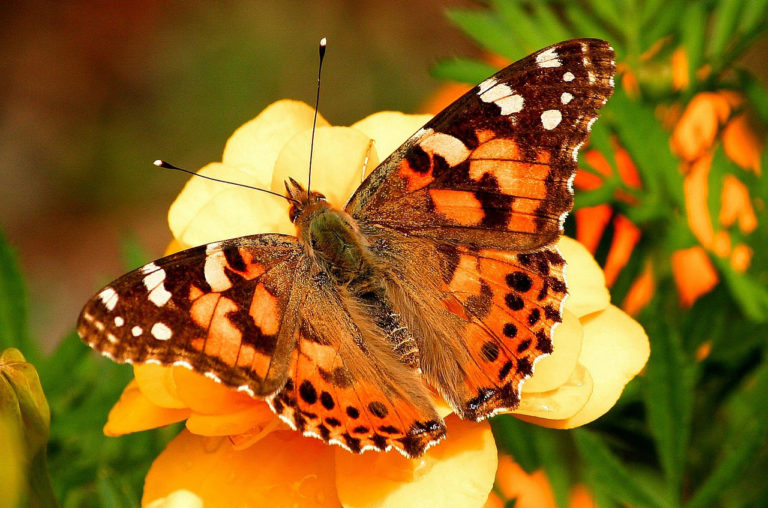It’s springtime in the United States, and while the desert wildflowers all open up their soft petals, they invite millions of beautiful, delicate Painted Ladies butterflies that sprinkle the skies.

Image: Pixabay
The recent good rains in Southern California have really provided for the spectacular floral blooms, attracting the butterflies on their migratory route from Mexico. They’re arriving in what appear to be swarms, travelling on the winds at over 30 kilometres an hour since mid March.
The black- and orange-winged insects are carried on the wind from the deserts in Mexico and at its border, moving into and through California, along the Los Angeles coast and now on to Texas and other parts of North America, including Canada.
The butterfly species is called Painted Ladies (Vanessa cardui), an accurate description for these pretty little winged creatures who elegantly usher in spring. The colourful insects are the slightly smaller ‘cousins’ of the well-known monarch butterflies, but unlike monarchs which are toxic, Painted Ladies are not – and a good thing too, as the millions of fluttering wings could be bringing more than just spring.
More info on the dazzling Painted Ladies:
– From eggs to death, the lifespan of these insects is about a year
– Painted ladies are considered to be the most widely spread butterfly species in the world, and elsewhere are also named cosmopolitans or Cosmopolitan Painted Ladies
– These butterflies mate while migrating, capitalising on warmer weather to mate throughout the spring season
– Both monarchs and Painted Ladies migrate to North America.
Check out these sightings of thousands of Painted Ladies in North America:
Featured image: David Slater via Flickr
You may also like
Related Posts
China’s National Health Commission has published a list of controversial coronavirus treatments that have animal...
read more
Warmer sea temperatures in the summer months, especially in February, were recorded and are believed...
read more
While people are stuck indoors due to the coronavirus pandemic, the penguins at the Two...
read more